Air Defense of the Islamic Republic of Iran (part 2)
In addition to equipping their radio engineering units with modern means of lighting the air situation, Iran pays great attention to the creation of combat information and control systems. Prior to the beginning of the "zero" command posts were equipped with outdated automatic control systems of release 70-80-ies of the last century, American, Chinese and Soviet production. For the most part, this equipment is very worn out and no longer corresponds to modern realities. Maintaining it in working condition is extremely difficult, since the outdated element base has not been produced for a long time. If the supply of components of Chinese and Soviet production is still possible, then with the American radio-electronic units the situation is very bad. Moreover, the Americans zealously ensure that even their heavily outdated military equipment does not get into Iran. Under these conditions, the Iranian leadership has relied on the development of its own automated control systems and the purchase of modern means of combat control abroad, mainly in China and Russia. In addition, Iranians, like the Chinese, do not pragmatically “bother” with the problems of observance of intellectual property rights, and in the conditions imposed against Iran, the sanctions are pulling everything that “lies badly”. Attempts by Iranian intelligence to extract the latest developments of Western European manufacturers of communication systems and air defense systems have been repeatedly recorded. Of the Soviet and Russian-made combat command and control units in the Iranian Air Defense Forces are: the Senezh-M1E ACS (supplied together with the C-200VE), Bikal-1МЭ (C-300PMU-2) and Ranjir-M1 ( LAW "Tor-M2E" and ZRPK "Pantsir-S1E").
Also, considerable attention in Iran is paid to the development of electronic warfare systems. The crews of the American reconnaissance aircraft RC-135 V / W, EP-3E and P-8A, regularly flying in neutral airspace along the Iranian coast, have repeatedly recorded very effective interference that suppressed airborne radio-technical complexes. After the loss of Iran’s territory in December 2011, the RQ-170 Sentinel UAV was forced to re-evaluate its Iranian assessments of Iran’s EW capabilities.
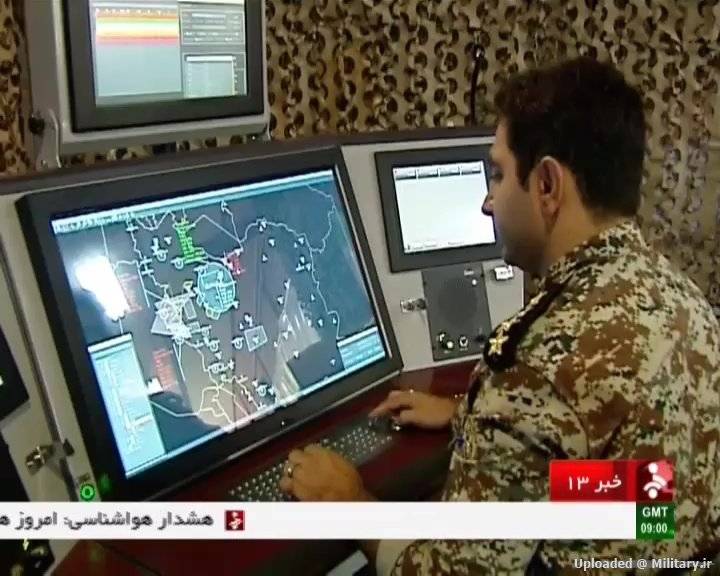
In the past few years, Iranian television has repeatedly demonstrated mobile systems for the automated control of troops and air defense command posts equipped with modern means of processing and displaying information.
The exchange of data between the means of radar control of the air situation, the headquarters and air defense command centers, the control points of the air defense missile system and the targeting of fighter-interceptors is carried out via high-speed underground fiber-optic lines, and radio relay and tropospheric radio communication are also widely used. In total, there are more than 160 communication centers, receiving and transmitting radio centers throughout the country. The Iranian tropospheric communication system includes more than 40 stations. It is reported that during the exercises, which took place in October 2016 of the year, Aseman protected radio communication equipment with a range of up to 150 km was used to work with air defense units deployed in field positions.
The air defense system of the Islamic Republic is divided into 9 areas, each of which has regional command posts capable of managing troops independently. According to data published in open sources, regional KPs direct the actions of air defense brigades.
Mixed brigades include anti-aircraft artillery and rocket units, as well as their own means of reconnaissance of the air situation. The highest density of anti-aircraft units is observed around strategically important facilities in northwestern Iran, and also partly along the coast of the Persian and Hormuz gulfs. In each area, 4 to 9 has been deployed to anti-aircraft missile divisions, which protect important administrative and industrial areas, oil refineries, nuclear fuel processing centers and nuclear power plants. At the same time, the areas bordering with Afghanistan and Pakistan are practically not covered, from where the threat of an air attack can also emanate.
As follows from the presented layout, there are no anti-aircraft complexes of medium and long range in these directions. At the same time, not so long ago, modern Chinese-made JY-14 radars were deployed in the border areas, which reflects the intention of the Iranian leadership to gradually cover up these areas. Perhaps, as modern air defense systems come into service, not the most modern air defense systems will be sent to secondary areas.
The central command post of the air defense, from where the air defense forces of the capital region are also managed, is located in the Khavar Shahr area. There is a multi-storey underground bunker with a length of more than 200 meters, covered from above with a thick layer of reinforced concrete. Two C-300PMU-2 and Mersad SAM systems (Iranian version MIM-23 I-Hawk) are deployed in its vicinity, as well as numerous anti-aircraft artillery positions.
After the end of the Iran-Iraq war, significant efforts were made to strengthen the combat potential of the Iranian anti-aircraft missile units. In the middle of the 80-x, work began on the restoration and modernization of the MIM-23 I-Hawk purchased at the Shah's SAM system. As the implementation of "import substitution", the localization of the production of radio-electronic base and the creation of solid fuel recipes, Iranian experts were able to launch the production of their own analogue, called Mersad. It is possible that in this case it was not without Chinese help. But one thing is for sure, with the 100% probability: in the air defense system assembled in Iran, Chinese components are used.
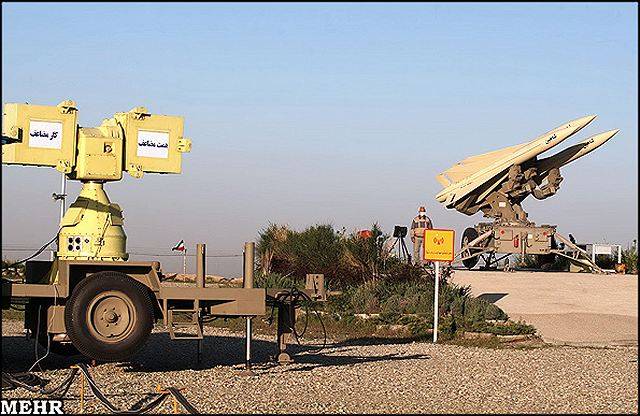
The Iranian version of the MIM-23VM has received the name Shahin. In 2011, information was announced about the introduction of the new Shalamcheh missile defense system into the Mersad air defense system, in which, compared to Shahin, noise immunity was improved and the probability of damage was increased. Externally, it does not differ from the previous American and Iranian missiles of the I-Hawk family. According to the Iranians, the new rocket uses an improved guidance system and a more efficient warhead. Thanks to a high-power solid-fuel engine, the launch range has been increased to 40 km.
The launcher also did not undergo any significant changes, but the hardware of the complex was modernized drastically. Almost all of the electronics is transferred to a modern solid-state element base. The filling stations for target illumination and target designation at high and medium altitudes have completely changed. Due to the increased energy performance of radar tools, noise immunity and detection range have increased. The complex includes a compact radar for detecting low-altitude targets in the centimeter range. The control cabin uses modern means of information display.
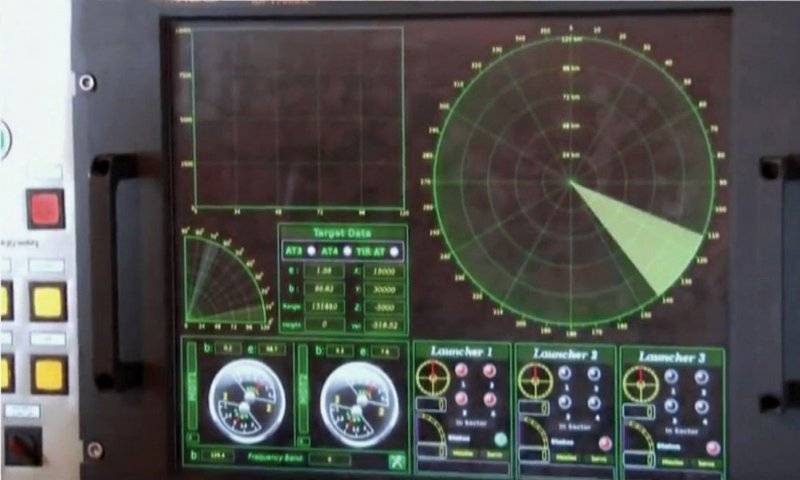
In addition to the towed version, with the aim of increasing mobility, several modifications of Mersad air defense systems on self-propelled wheeled and tracked chassis were realized. At the firing position, all elements of the complex are interconnected by cable lines.
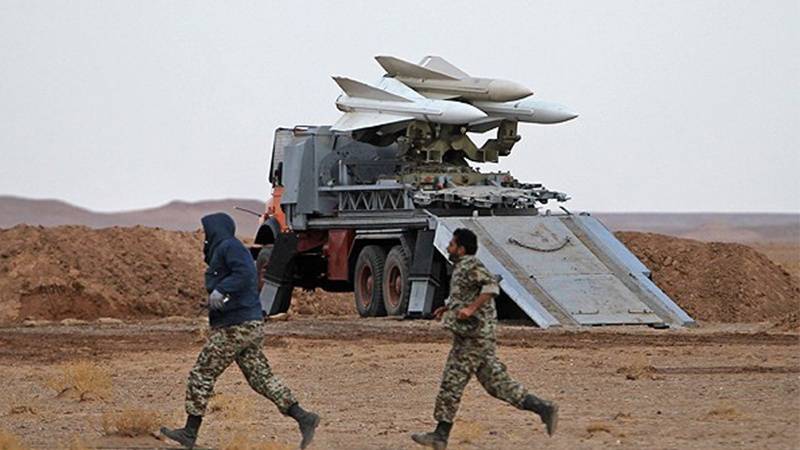
Since Iran from the beginning of 90-x gained access to modern mobile complexes of Russian origin, modifications of the Mersad air defense system on the cargo and tracked chassis were not widely used and the towed version was mainly produced. At present, about two dozen Mersad air defense systems are deployed in Iran, which have completely replaced the worn-out MIM-23 I-Hawk.
As mentioned in the first part of the review, at the end of the 80-s and the beginning of the 90-s 14 ADMS HQ-2J was delivered to Iran from the PRC. At the beginning of the 21 century, the modernization of the Chinese C-75 air defense system began in the Islamic Republic of Iran and its own production of anti-aircraft missiles, designated Sayyad, was launched.
Bulky fluid missiles with a radio command guidance system are today perceived as rarities from the time of the Cold War. Nevertheless, work on their improvement was carried out until recently. Following the first version of the Zur, a modification appeared with a thermal homing head. Apparently, TGSN is used in conjunction with the radio command guidance system, in the final part of the trajectory, in close proximity to the target.
Recently, HQ-2J are gradually being superseded by more sophisticated anti-aircraft complexes. These air defense systems with six launchers located around the guidance station are perfectly visible from space. In pictures taken in 2016, one can observe the entire 5 active stationary positions. At the same time, there are no missiles at the two positions on the launchers, and the rest have fewer missiles. Most likely, this is due to the unwillingness to spend forces and funds on the maintenance, equipment and refueling of rockets, whose combat value in modern conditions is very doubtful. The HQ-2J immunity is low, and the relocation time is completely unsatisfactory.
Even 10-15 years ago, at military parades and military equipment exhibitions held in Tehran, elements of the Kvadrat mobile air defense system (export version of the Soviet Kub air defense system on a tracked chassis) were regularly demonstrated. He first appeared in the Islamic Republic back in the 80s, but where it came from this complex is not clear.
Foreign media reported that several batteries were shipped from Russia in the second half of the 90's. However, this is unlikely, since in our country by that time the “Kub” air defense system was removed from service, and their production was completed at the beginning of the 80's. Most likely, Iran has acquired “Squares” in one of the Eastern European countries, with Romania being the most likely supplier. At the moment, in connection with the development of the resource of the hardware and missiles, the Iranian Kvadrat SAM systems are most likely not being exploited. In any case, in recent years, they are invisible at parades and exercises.
In 2005, there was information that the Moscow enterprise Granit OJSC received an order to modernize the Iranian Kvadrat air defense missile systems. This modernization was very peculiar. Simultaneously with the extension of the resource of the few Iranian "Squares" and their anti-aircraft missiles, the Islamic Republic of Iran started assembling Raad mobile air defense systems on a wheeled chassis with rockets that look like the outlines of the Soviet 9X38, used in Buk-M1.
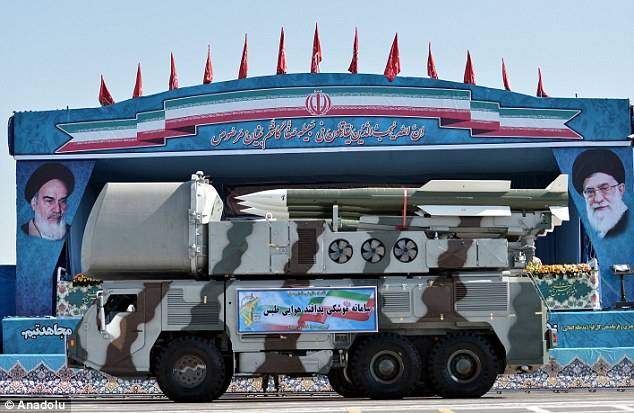
These rockets were later also used in complexes known in the West as Khordad and Tabas-1. A common feature of the Iranian mobile military medium-range air defense systems is the use of a wheelbase that looks like the MZKT-6922 with off-road maneuver.
For the first time a new complex was demonstrated at a military parade in September 2012. As Iranian General Ami Ali Hajizadeh said, speaking on Iranian television, the Raad air defense system is capable of striking air targets within 45 radius of kilometers and at an altitude of 22000 meters. There is little detailed information in open sources about the new Iranian complex. Unknown the full composition of the system, the type and characteristics of the radar detection. However, by analogy with the Buk air defense system, it can be assumed that the battery includes both conventional SPU without radar equipment, and self-propelled firing units with radar target illumination. In addition to the special wheeled chassis of all-terrain, a variant of the Raad air defense system mounted on heavy three-axle trucks is known. Given the fact that a significant part of the territory of Iran is a fairly flat desert area, the existence of such a cheaper modification seems to be quite justified.
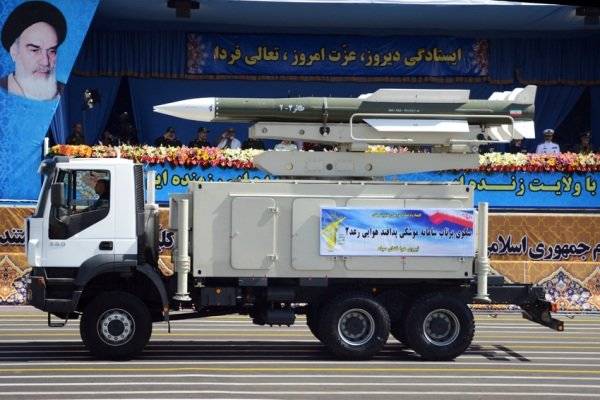
Conceptually, these Iranian anti-aircraft complexes on a wheeled chassis are similar to the export Buk-MXNUME air defense system. The launch of rockets is also carried out after posting the combat vehicles on the jacks. Compared to the Russian Buk family air defense systems, the wheel modification is somewhat cheaper, but it has the worst maneuverability on rough terrain.
It is possible that in this case we are talking about different versions of the same complex, which differ slightly from each other in details. This seems quite probable, since the Iranian leadership is trying in every way to embellish its achievements and create the illusion of having a large number of different types of air defense systems in service. It can be assumed that the creation of Iranian anti-aircraft complexes and missiles constructively and in their characteristics close to the Russian "Buk" is carried out with the support of Russia in the form of the delivery of technical documentation and components.
In 1992, 3 air defense systems C-200VE Vega-E (channels) and 48 SAMs of the “export” version B-880E were supplied to Iran from Iran. This "strategic" anti-aircraft complex with a range of destruction of high-altitude targets up to 240 km, became the "long arm" of Iranian air defense. In all versions of the C-200 SAM missiles, semi-active homing is used, and the SAM itself is guided by a radar signal generated by the target, generated by the target illumination radar.
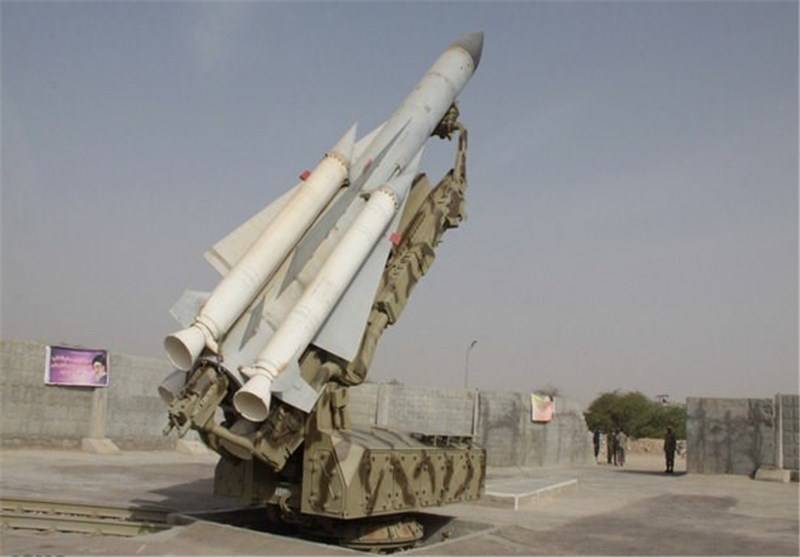
Apparently, the contract for the supply of C-200BE was concluded during the stay of the USSR, and Russia had to implement it. In 1992, our country has already begun mass production of C-300PM air defense systems with a comparable launch range, and due to the large-scale reduction of the armed forces, C-200 air defense systems were removed from positions. With unsurpassed in many ways still characteristics of the C-200 family-to-air missile systems are very cumbersome and problematic in operation. Toxic fuel triethylaminoxydiline (TG-02) is used as a flammable liquid jet engine of the rocket, and nitric acid with the addition of nitrogen tetroxide is extremely aggressive as an oxidizing agent. Rocket fuel and oxidizer should be refilled in protective rubberized suits and insulating gas masks. Neglect of remedies can lead to very serious consequences, even death.
Unlike the USSR, where the firing position equipment scheme for six launchers was adopted, in Iran, one 5H62VE target radar has two 5P72VE targets, which seems to be due to the limited number of missiles delivered. Opposite the launchers, approximately in 30 meters, reinforced reinforced concrete storages were built for spare missiles. From there, rockets along specially laid rails should be fed to PU, thus reducing the recharge time to a minimum. Moreover, in Iran, the number of launchers in positions compared to the Soviet deployment option has been reduced three times, careful engineering training of positions draws attention. Well-fortified reinforced concrete bunkers were built for personnel and equipment.
Apparently, in the second half of 90's, an additional batch of missiles and guidance stations, as well as spare parts, were sent to Iran. At the beginning of the "zero" duty in the Islamic Republic carried 5 long-range air defense systems. The C-200BE positions were located under Tehran (2 bldg), near the Hamadan airbase (1 bldg), at Esfahan (1 bldg) and in 10 km east of the main naval base of Bandar Abbas (1 bldg).
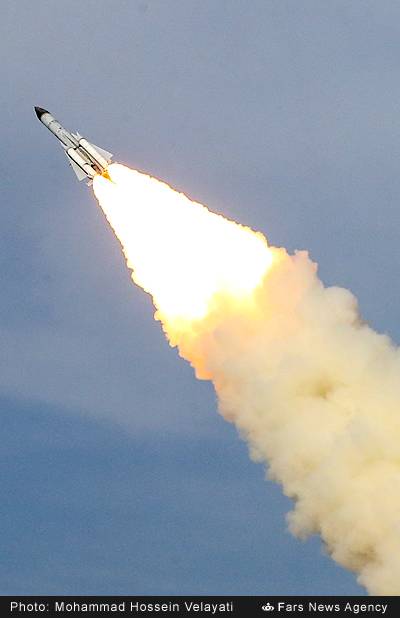
None of the major exercises of the air defense forces could do without spectacular launches of long-range anti-aircraft missiles. Each time it was widely covered by Iranian state television and received a wide response in the world media.
Approximately 10 years ago, Iran announced the “modernization” of the C-200BE air defense system and the creation of its own missile. It was even said about the creation of a “mobile” version, which later was not confirmed. Most likely, under the "modernization" Iranian officials had in mind reconditioning and a partial transfer to the solid-state element base. Most likely, with the modernization of the C-200BE, Iran was assisted from outside. A number of military experts indicate that the developer and implementer of the modernization program was the Belarusian enterprise OAO Tetrahedr, which since 2001 has been specializing in the modernization of Soviet-made air defense systems.
Google Earth satellite image: C-200VE stationary position at 10 km south of the Ahmadabad airfield near Tehran
Currently, the life cycle of Iranian S-200VE is nearing completion. This is very clearly visible in satellite imagery. Even though the number of launchers in Iranian divisions has been reduced to two, in the last few years, missiles are usually infected only by one “gun”. The reason for this may be a shortage of conditioned missiles, as well as the complexity and complexity of refueling and equipment. But you should not expect a quick decommissioning of the “two hundred” in Iran, they will remain in service for at least 5-7 years. By and large, the S-200VE deployed in Iran in stationary positions are “peacetime complexes”. They are almost ideal for dealing with airspace intruders, such as the RC-135 V / W electronic reconnaissance aircraft or the U-2S and RQ-4 Global Hawk high-altitude reconnaissance aircraft, but are ineffective against cruise missiles or tactical and carrier-based aircraft aviation operating at low altitudes, and are extremely vulnerable due to stationary placement. There is no doubt that in the event of a collision with a technologically powerful adversary, all Iranian XNUMXs will be quickly neutralized.
In 2013, Iranian Defense Minister Brigadier General Hossein Dehkan presented a new Talash long-range anti-aircraft missile system with Sayyad-2 SAM. A number of experts agree that this rocket is based on the American RIM-66 SM-1MR. During the years of the Shah’s rule, medium-range anti-aircraft missiles armed Iranian Navy warships of American construction.
Externally, the Talash launcher very much resembles the American MIM-104 Patriot. According to the information voiced at the presentation, the Sayyad-2 SAM sighting launch with a semi-active radar guidance system reaches 100 km.
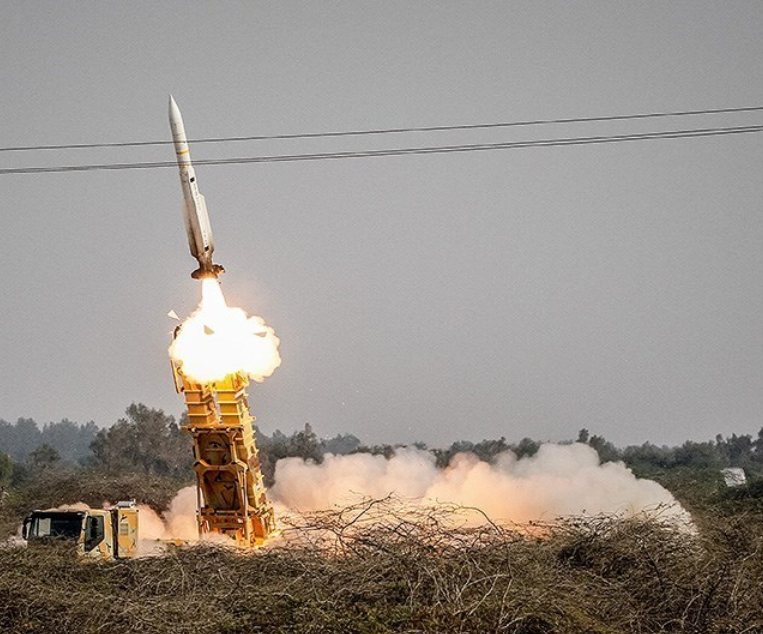
At the same time, there is no reliable information about the detection radars and target illumination. It is possible that the Hafes radar, which was demonstrated at the exhibition of the achievements of the defense industry of the Islamic Republic of Iran together with the Sayyad-2 and Sayyad-3 missiles, was intended for targeting missiles at the target.
According to the information sounded in the Iranian media, the range of destruction of air targets with Sayyad-3 missiles must reach 200 km. However, it is not known how far the Talash air defense system has advanced and how new missiles are capable of fighting modern air attack weapons.
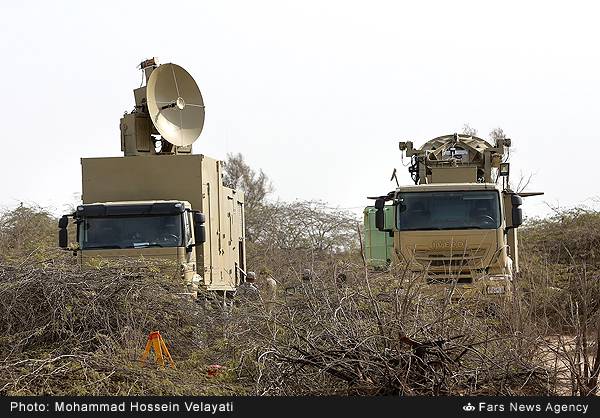
At the recent Iranian air defense exercises, which took place in December 2016, in the area where the Sayyad-2 missiles were launched, hardware based on Iveco three-axle trucks with parabolic rotating antennas in the upper part of the van got into the photo and television lenses. Some military observers are inclined to believe that these were anti-aircraft missile guidance stations.
Attempts to create self-contained medium-range anti-aircraft complexes in Iran designed to cover their own troops in the front-line zone and long-range anti-aircraft systems to protect infrastructure, industry and administrative centers reflect the intention to build a multi-level air defense system. At the same time, the concept of building an air defense of the Islamic Republic is viewed as an approach taken back in the USSR, when highly mobile complexes with radar detection equipment were created for the air defense units of the Ground Forces. And the country's air defense forces received anti-aircraft systems, albeit not possessing such maneuverability on the ground, but much more suitable for long-term combat duty, with long-range surveillance radars and high-performance automated control systems.
The creation of a long-range anti-aircraft missile system Bavar-373 in Iran is within the framework of this concept. According to statements by Iranian officials, this ZRS was promptly developed in response to the cancellation of the C-2010P supply in 300. Soon, during the military parade in Tehran, individual elements of the Bavar-373 air defense system were introduced.
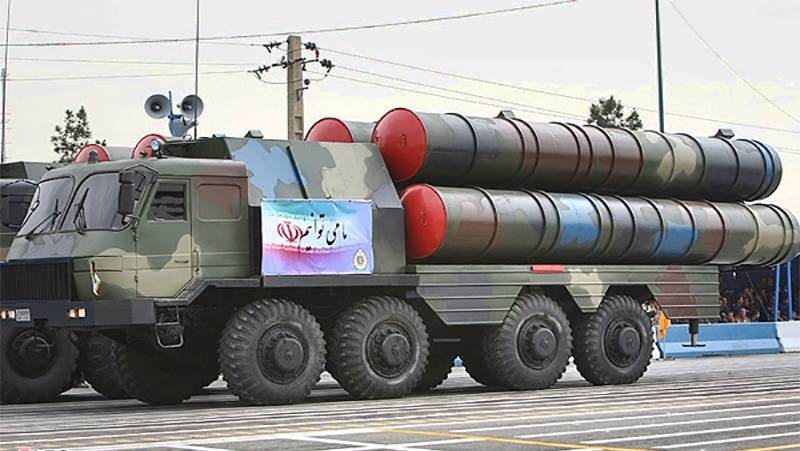
Initially, many experts considered that Iran was once again bluffing and demonstrated self-propelled SPU, nothing more than mockups. However, in August 2014, the first test launches of the Sayyad-4 anti-aircraft missiles took place, which was confirmed by American intelligence.
Iranian President Hassan Rohani and Defense Minister Hossein Dehgan next to the new Bavar-373 air defense system in Tehran. 21 August 2016 of the year
According to a statement by Defense Minister Hossein Dehkan, made during a demonstration of the new air defense system to Iranian President Hassan Rohani, in August 2016, the new anti-aircraft system should be put into mass production in the near future to surpass the Russian S-300PMU-2 air defense system in its characteristics. According to Hossein Dekhkan, the new Sayyad-4 SAM is capable of destroying not only combat aircraft and Drones, but also to hit cruise and ballistic missiles at a distance of 250 km. It is noteworthy that the first Bavar-373 launchers were initially demonstrated with transport and launch containers resembling the S-300P air defense missile defense system. However, later self-propelled launchers with rectangular TPKs were shown. It is reported that, unlike the S-300P air defense system, Iranian missiles use a "hot" start.
But the veracity of the words of the Iranian defense minister is doubtful, since in this case there would be no point in purchasing the Russian C-300PMU-2. To create an anti-aircraft missile capable of intercepting targets at a declared range is the most difficult task that Iranian specialists are unlikely to be able to solve in the near future. And it's not just about developing effective solid fuel formulations. Designing guidance systems capable of operating at such a range is a truly extraordinary task. Of course, Iranian specialists have certain experience in upgrading and establishing mass production of American and Chinese first-generation air defense systems, but this is most likely not enough to create a family of Russian 48НХNUMX missiles with a semi-active radar homing head and radio-correcting on the trajectory. To understand the essence of the question, it is probably worth recalling that in the 6 year, the first radio command anti-aircraft missile of type 1978В5К used in the C-55PT air defense system had a launch range of just 300 km, which was comparable to the range of defeat of the latest modifications of the C-47 SAM. Only in 75, the C-1984PS was adopted by the 300В5Р ЗР, in which, thanks to the use of semi-active RGSN, the launch range was able to reach the km 55. Subsequently, an improved 75B5PM rocket appeared, with the distant border of the 55 km affected area. C-90PS with 300В5РМ AUR are still serving in the Russian Aerospace Forces, and despite their advanced age, they pose a threat to modern means of air attack. Taking into account all the above, it can be concluded that if the IRI even managed to create an anti-aircraft system capable in its characteristics to compare with the C-55PS, this can be considered a very good result. Countries where modern medium-range and long-range anti-aircraft systems are being created can literally be counted on the fingers, and this is not surprising, given that creating an effective anti-aircraft missile system requires a base in the form of a developed scientific design school, a modern radio electronic industry and basic research baggage. As you know, in full, all this in the Islamic Republic is not.
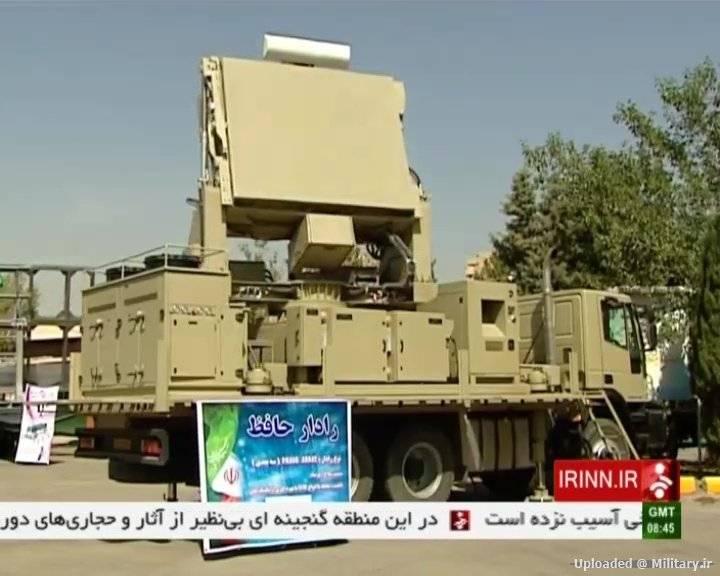
Also, as part of the Iranian air defense system, a mobile three-coordinate radar station Meraj-4 should be used. This mobile radar was glimpsed several times in Iranian television reports. Again, according to the unconfirmed statements of the Iranians, its characteristics are comparable with the 64H6X2 detection radar, which is part of the C-300PMU-2 SAMs.
Comparison of air defense systems in Iran with the C-300PMU-2 system is not at all accidental. Iran began to probe the soil for the acquisition of modern long-range Russian-made systems about 15 years ago. In November, 2003, the first preliminary consultations were held on the purchase of at least 5 srdn C-300PMU-1 (export version C-300PM with a range of up to 150 km). Modern long-range anti-aircraft systems were needed by Iran to protect their nuclear facilities, in the face of increasing pressure from the United States. At the same time, there was also a great threat of strikes by the Israeli Air Force. As is well known, Israel is extremely sensitive to the attempts to acquire nuclear weapons. weapons their unfriendly-minded neighbors. The fact that the Israeli Air Force is capable of successful long-range raids has been confirmed more than once. So, for example, 6 September 2007, the Israeli F-15I, having come from Turkey, destroyed the Syrian nuclear facility in the Deir el-Zor region (more here:Operation "Orchard").
Negotiations on the supply of C-300PMU-1 took several years, and at the end of December 2007, the Minister of Defense of Iran, Mostafa Mohammad Najjar, released information on the conclusion of a contract with Rosoboronexport worth $ 800 million. After that, the Russian leadership began to undergo strong pressure from the United States and Of Israel. In the 2010 year, shortly after the adoption of a resolution in the UN Security Council envisaging the imposition of a sanction against Iran, our country canceled the deal. In response, in April 2011, Iran filed a lawsuit against Rosoboronexport with the OSCE Court of Conciliation and Arbitration in the amount of $ 900 million. During preliminary hearings, Iranian representatives stated that the supply of Russian anti-aircraft systems should not be subject to a UN Security Council resolution, since the contract was signed before the introduction of sanctions against Iran. In this case, the Iranians were absolutely in their right, and the supply of defensive anti-aircraft systems did not threaten the security of other countries. Having found itself in a rather difficult situation, the Russian government offered in exchange for the C-300PMU-1 mobile short-range air defense systems Tor-M1E, which in turn was rejected by Iran. According to Iranian Ambassador to the Russian Federation Mahmud Reza Sajadi, a special multi-level air defense system of the country was developed in the Islamic Republic, and in this system Thor is not capable of replacing long-range air defense systems C-300PMU-1. In September 2011, the Iranian side announced that Russia had returned $ 166,8 million, received as a prepayment.
In April, 2015, Vladimir Putin lifted the ban on the supply of C-300 air defense systems to Iran. However, the practical implementation of the contract was hampered by the fact that by that time the production of anti-aircraft systems of the C-300P family in Russia had been curtailed and C-400 was being built at the existing production facilities. Iran was offered an Antey-2500 air defense system (improved version of C-300В). However, this proposal did not meet with understanding, as the military C-300В is largely focused on repelling short-range ballistic missile strikes and its ability to carry out long-term combat duty and fire performance worse than the C-300П object-based anti-aircraft systems. However, the parties were able to agree, and the lawsuit against Russia was withdrawn. At the same time, the number of anti-aircraft divisions supplied in the IRI decreased to four, and the contract value increased slightly. As follows from the information made public in the media, Iran was offered a more advanced C-300PMU-2 modification as compared with the initial version. However, it is not clear where these systems came from, whether it was necessary to re-establish their production, or whether these were modified to the C-300М export version from the presence of the RF videoconferencing system.
The delivery of four C-300PMU-2 divisions in Iran was carried out in several batches during the 2016 year. Judging by satellite imagery, the launch of the first S-300PMU-2 sr. To combat duty took place in July 2016. They are deployed in the former positions of the C-200BE air defense missile system on the southern outskirts of Tehran and in the immediate vicinity of the air defense command post in the Khavar Shahr area.
In March 2017 of the year, a video with real launches of C-XNUMPPMU-300 was made public during the Damavand exercise, which indicates that Iranian calculations at least partially mastered the new technique. But, judging by the published American data and fresh satellite images, not all the airborne missiles delivered from Russia have begun to carry out permanent combat duty.
Long-range anti-aircraft missile systems C-300PMU-2 are certainly able to seriously increase the potential of the Iranian air defense system. This, in turn, in the Russian media gave rise to overly optimistic statements like:
Such statements, which do not correspond to the same areas of deployment, are rather irresponsible. Authors who write such things should remember that even the most sophisticated anti-aircraft system in itself does not guarantee the inviolability of the protected objects, since it depends a lot on the selected outfit of air attack weapons and the duration of combat operations. In addition, the Iranian air defense is still very far from perfect, has a lot of problem areas. Four srdn physically unable to cover the entire territory is not the smallest state. The number of anti-aircraft missiles in positions is not infinite, and countries that can be expected to attack Iran have the technical ability to overwhelm an air defense system with an excessive number of air targets, such as UAVs and cruise missiles. As is known, in the past, American and Israeli pilots actively learned to break through the air defense lines during joint NATO exercises on the C-300PMU and C-300PMU-1 airplanes in Greece, Slovakia and Bulgaria. And although Iran has been supplied with a more modern and long-range modification of the Russian air defense systems than those C-300Ps that are in service with NATO countries, it’s impossible to say that Iran’s air defense has become absolutely impregnable.
To be continued ...
Based on:
http://geimint.blogspot.co.uk/
http://www.janes.com/article/29817/iran-rolls-out-another-medium-range-sam
http://www.nationaldefense.ru/includes/periodics/geopolitics/2012/0402/18068189/detail.shtml
https://web.archive.org/web/20071018002847/http://janes.com/defence/news/jdw/jdw070522_1_n.shtml
http://thearkenstone.blogspot.co.uk/2016/05/overview-khatam-al-anbiya-headquarters.html
http://www.thetruthseeker.co.uk/?p=56805
http://www.designation-systems.net/dusrm/m-66.html
http://simhq.com/forum/ubbthreads.php/topics/4345466/33
http://www.americanmilitaryforum.com/forums/threads/iran-air-defence-systems.1360/
http://tass.ru/info/2422398
http://imp-navigator.livejournal.com/521239.html
Articles from this series:
Air Defense of the Islamic Republic of Iran (part 1)
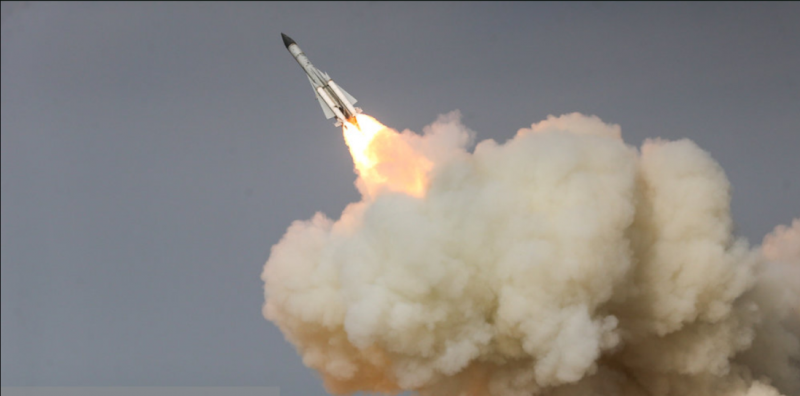
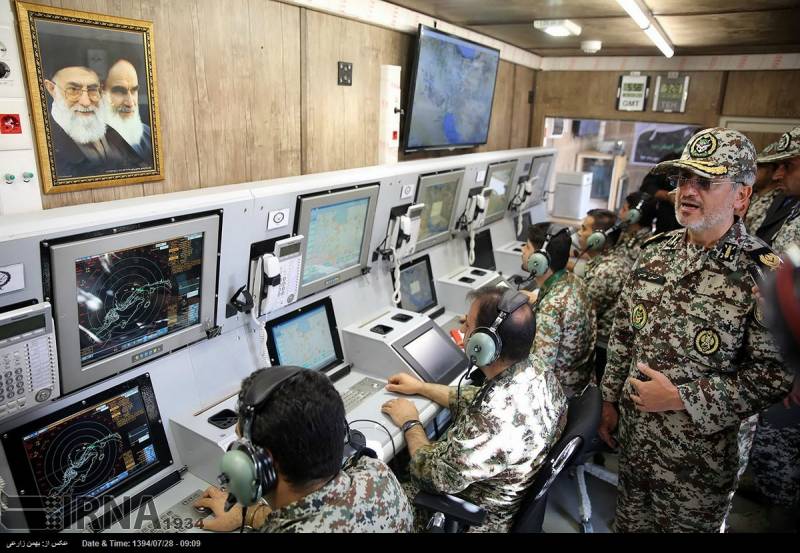
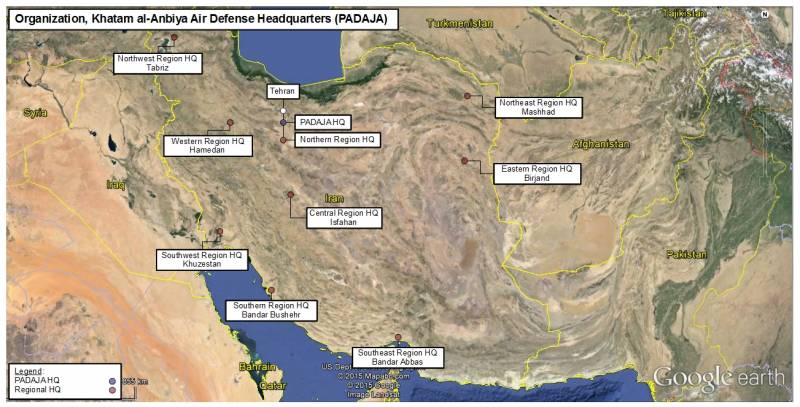
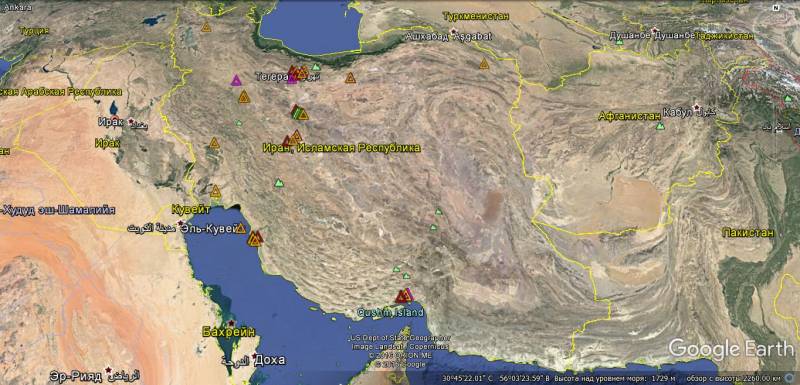
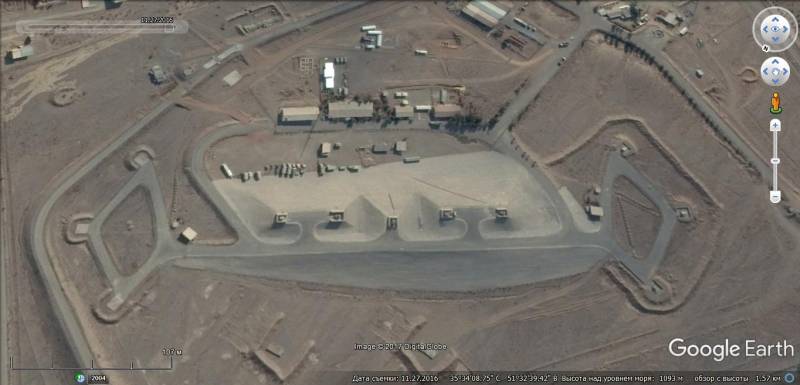
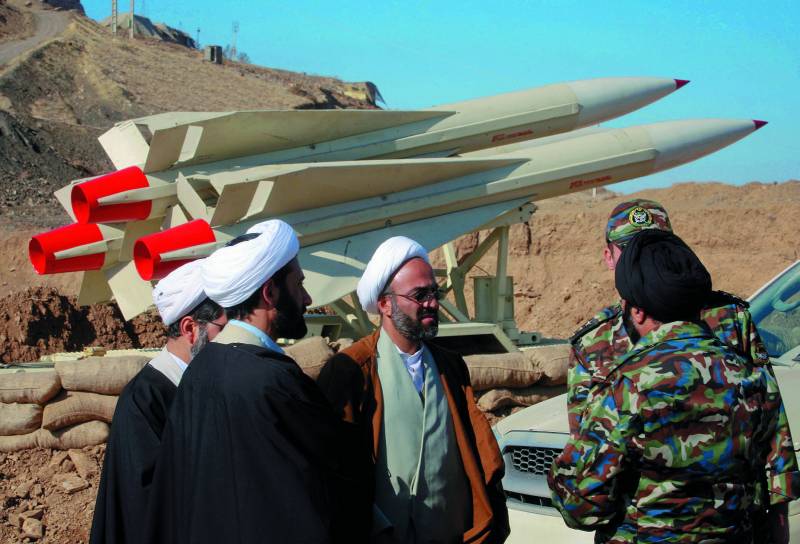
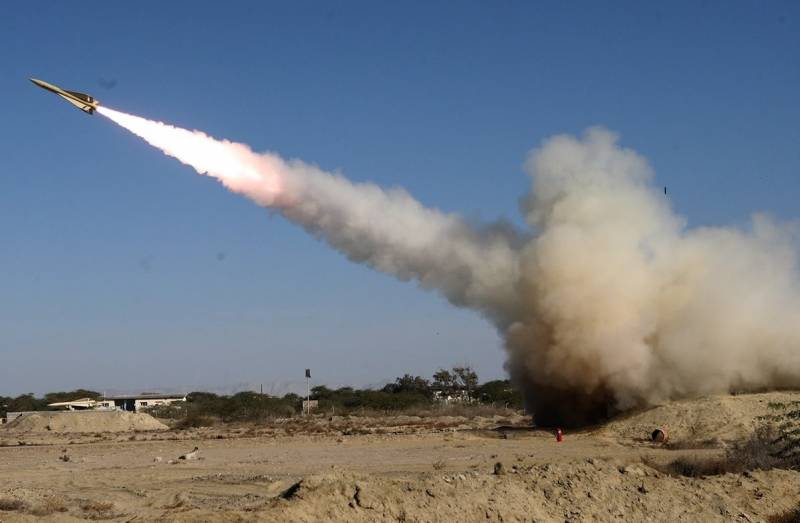

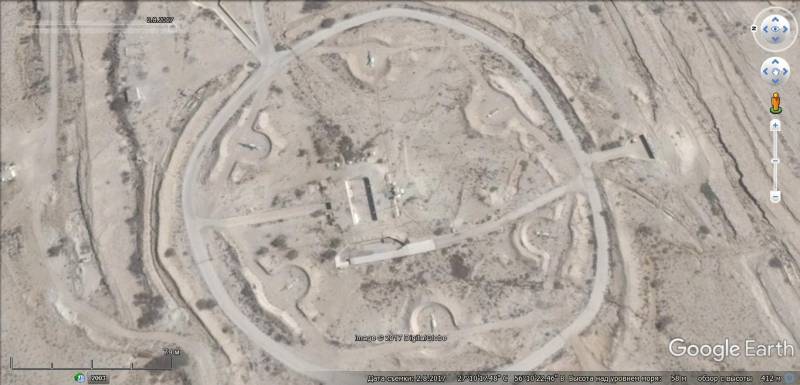
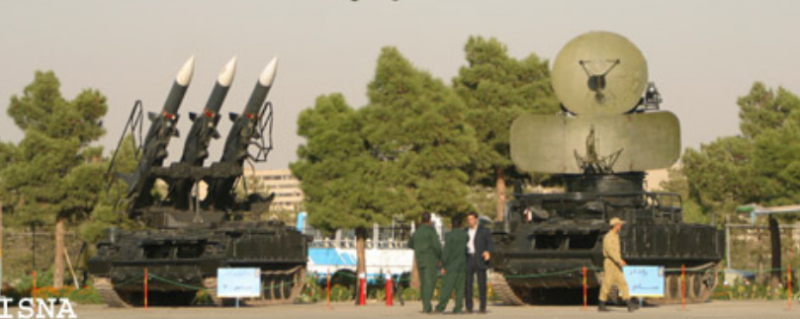
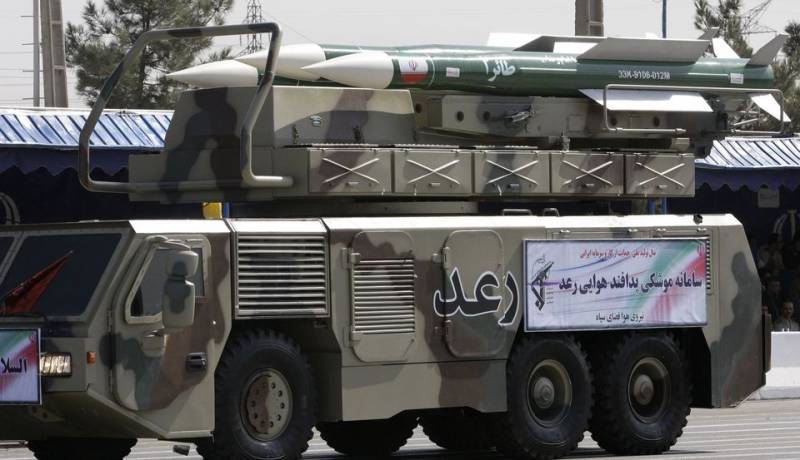
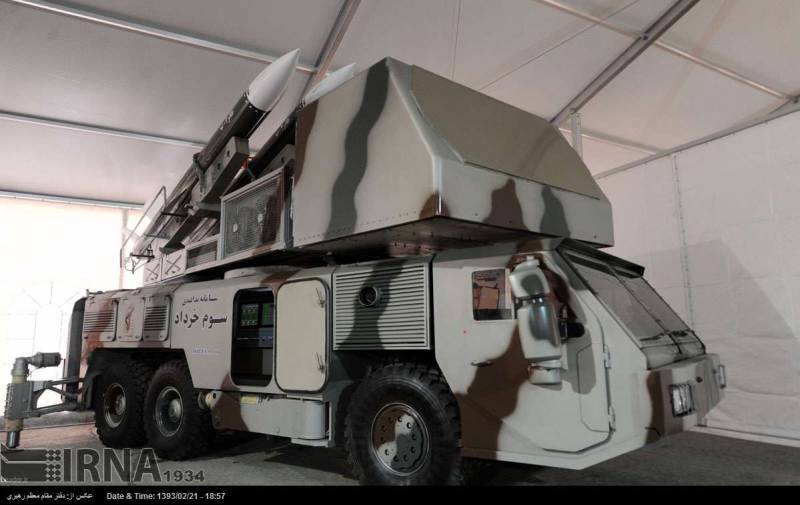
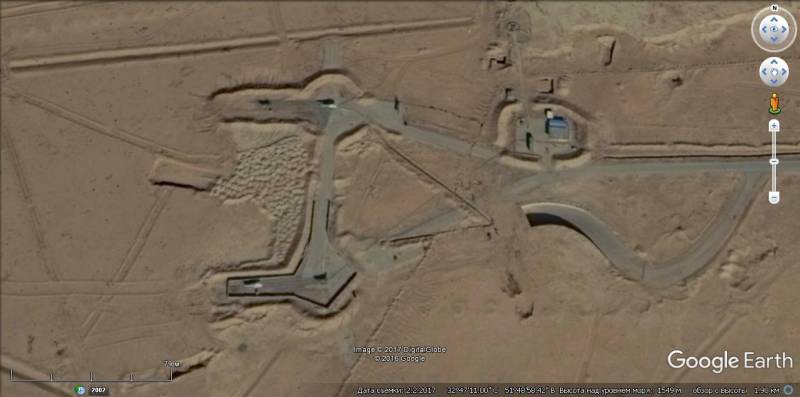
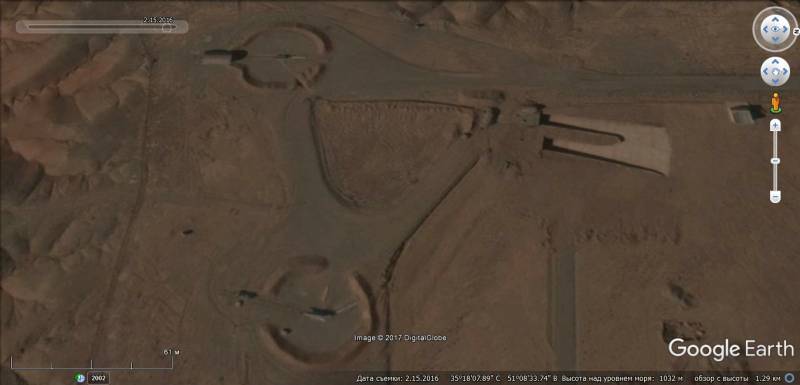
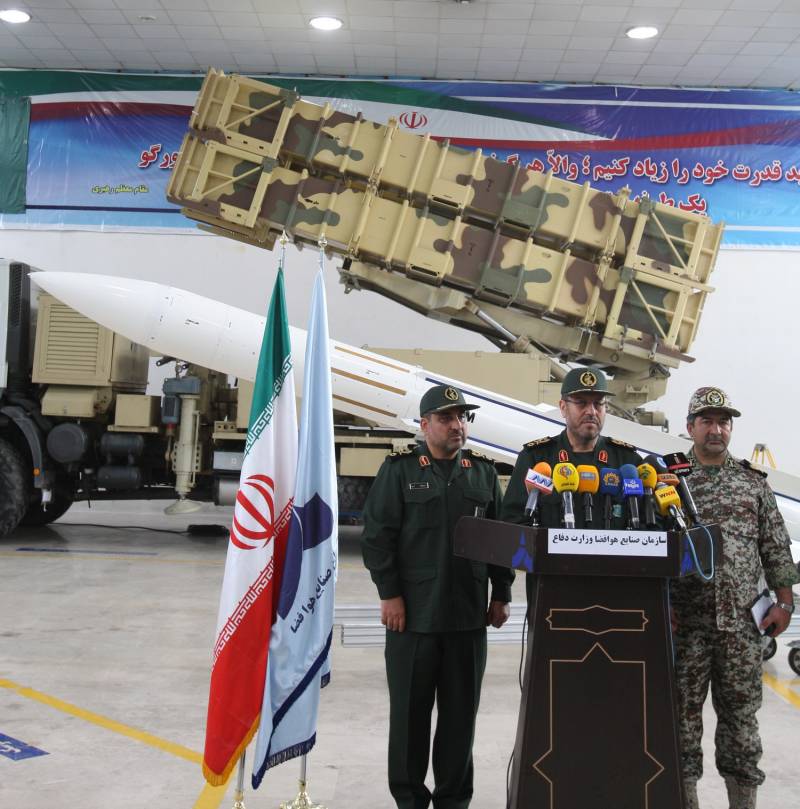
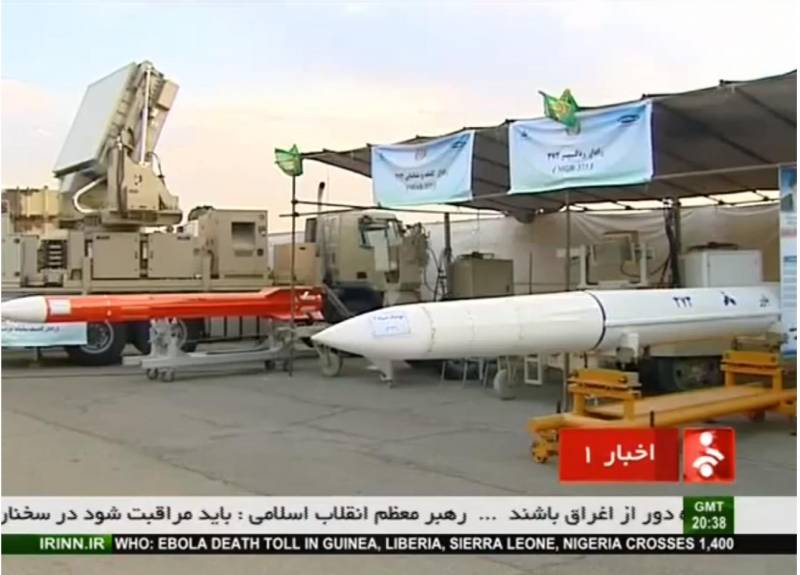
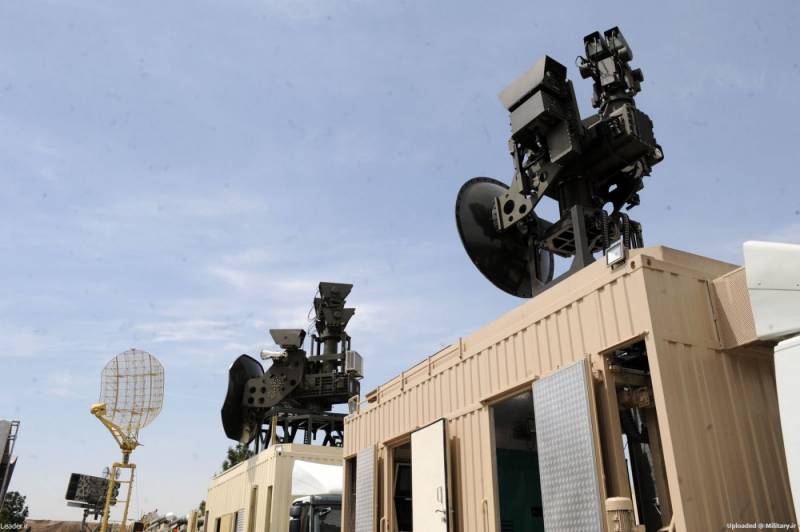
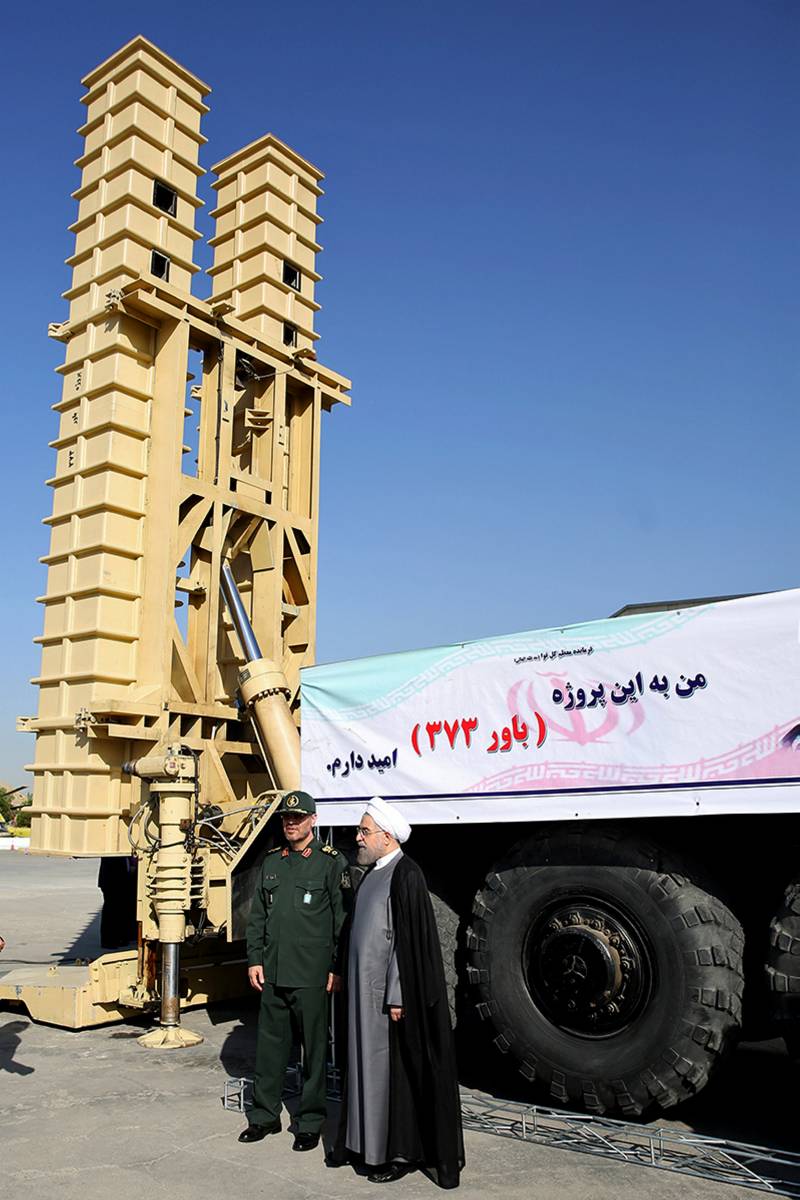
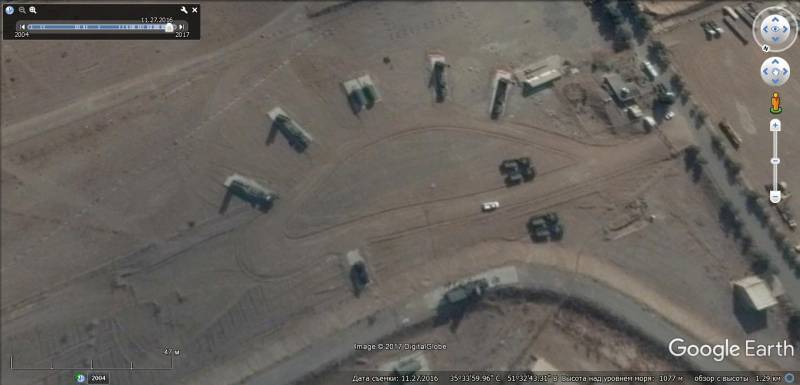
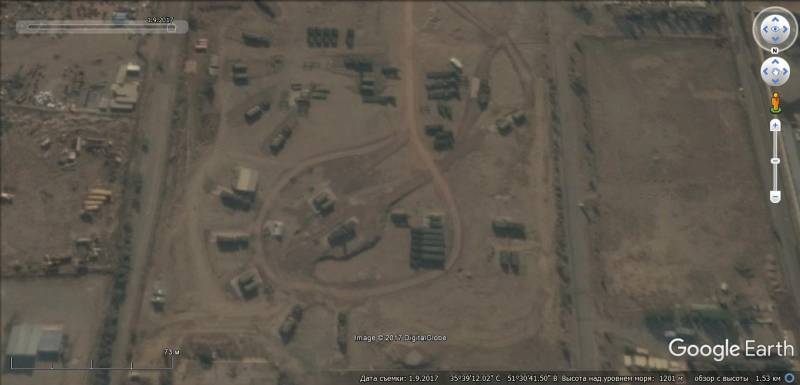
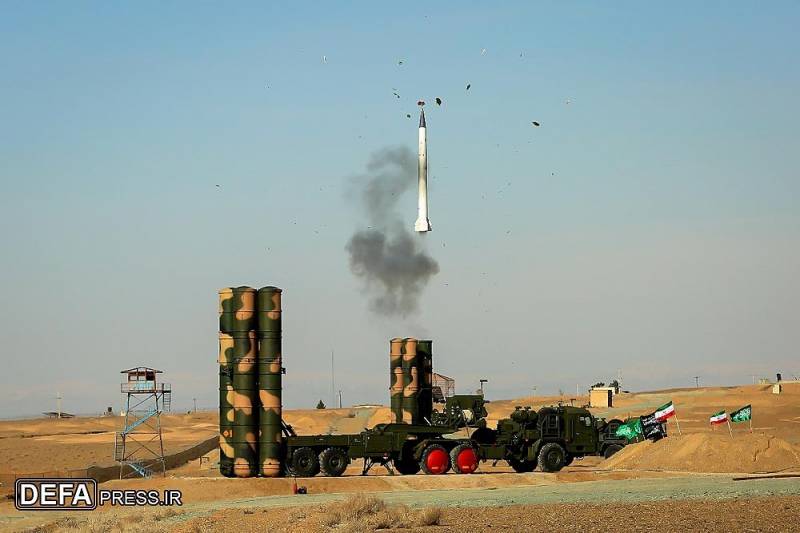
Information